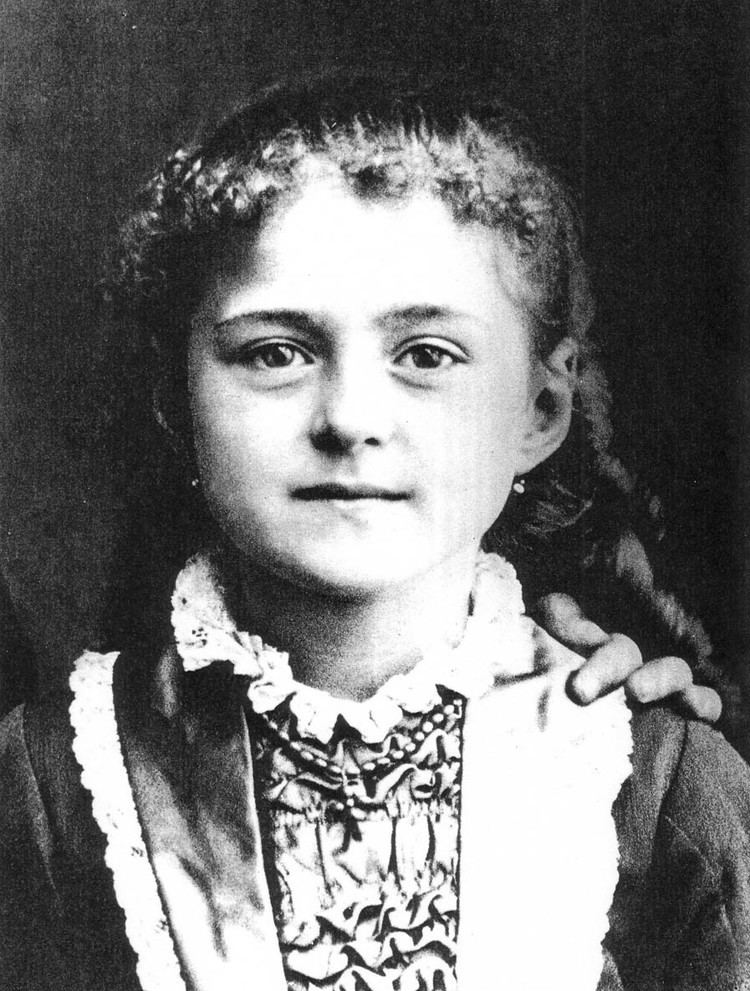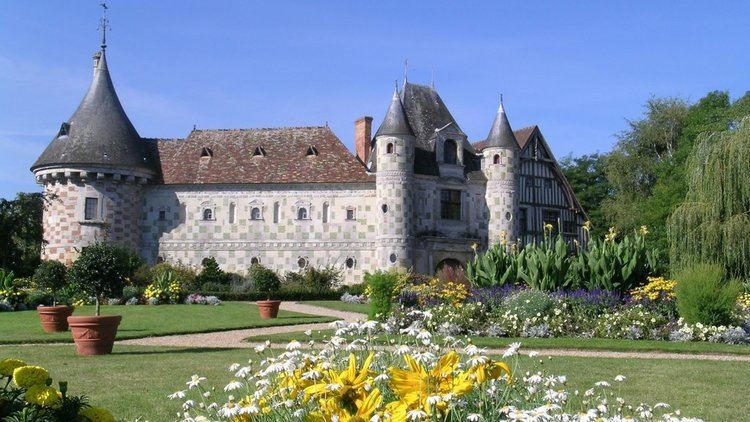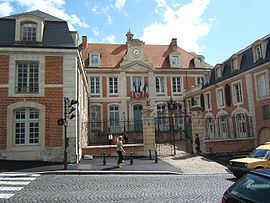Country Region Lower Normandy | Area 22,109 Mayor Bernard Aubril | |
 | ||
Points of interest Basilica of St Therese - Lisieux, Musee dart et dhistoire de Lisieux, Lisieux Cathedral | ||
Map of Lisieux
Lisieux ([lizjø]) is a commune in the Calvados department in the Normandy region in northwestern France. It is the capital of the Pays d'Auge area, which is characterised by valleys and hedged farmland.
Contents
- Map of Lisieux
- The little flower of jesus saint therese of lisieux inspirational story ever told
- France travels day 14 saint therese and lisieux basilica
- Name
- Antiquity
- Middle Ages
- Events
- Geography
- Climate
- Transport
- Religion
- Les maires de Lisieux
- International relations
- Population
- Sights
- Basilica of Sainte Thrse de Lisieux
- Chteau de Saint Germain de Livet
- Saint Pierre Cathedral
- Town Hall
- Personalities
- References

The little flower of jesus saint therese of lisieux inspirational story ever told
France travels day 14 saint therese and lisieux basilica
Name

The name of the town derives from the Latin Noviomagus Lexoviorum ("Noviomagus of the Lexovii"). The town was originally known in Celtic as Novio Magos ("New Field", "New Market"), which was Latinized as Noviomagus. Owing to the large number of similarly-named cities, however, it was necessary to specify where this one was located. The local French demonym "Lexoviens" derives from the Latin as well.
Antiquity
Lisieux was the capital of the Lexovii. In his work, Commentaries on the Gallic War, Caesar mentions a Gallic oppidum, a term which refers to Celtic towns located on the tops of hills. The oppidum has been pinpointed to a place referred to as le Castellier, located 3 kilometers (1.9 mi) to the southwest of the town. However the Gallo-Roman city was in fact located where Lisieux is to be found today.
Middle Ages
Lisieux was an important center of power in medieval times. The bishopric of Lisieux controlled most of the Pays d'Auge by the 12th century. King Henry II and Eleanor of Aquitaine are thought to have married at Lisieux in 1152, and the town remained powerful for several centuries afterwards until in the 14th century the triple scourges of the Plague, war and resulting famine devastated Lisieux and reduced its influence. The main judge of Joan of Arc, Pierre Cauchon, became a bishop of Lisieux after her death and is buried in the Lady Chapel of the cathedral.
Events
Geography
Lisieux is situated on the confluence of the river Touques and many of its tributaries: the rivers Orbiquet, Cirieux and Graindain.
The town is in the heart of the Pays d'Auge, of which it is the capital. Lisieux is therefore surrounded by Normandy's typical hedged farmland, where there is a mix of livestock farming (mostly milk cows) and cider apple cultivation (from which cider and calvados are made, not forgetting pommeau).
Climate
Lisieux has a temperate oceanic humid climate.
The table below shows the temperatures and precipitation for the year 2007 (provided by the Caen-Carpiquet weather station:
The table below shows the record minimum and maximum temperatures:
Transport
The town of Lisieux is served by a bus network called Lexobus, with 6 routes. The town is also linked to surrounding towns and villages by a network of buses; Bus Verts du Calvados. There is a railway station in Lisieux, which is the connecting station between the Paris-Cherbourg and Paris-Trouville/Deauville main lines, served by Corail Intercités Normandie trains. The station is also accessible by the Transport express régional (regional express) trains on the Basse-Normandie and Haute-Normandie routes. The railway station appeared in the film Un singe en hiver by Henri Verneuil.
To reach the town by car, the D613 (formerly route nationale 13) from Paris to Cherbourg crosses the town from east to west. The second main road of Lisieux is the D579, leading to Deauville to the north and the department of Orne to the south. Lisieux benefits from a bypass, built in the 1990s, running to the south of the town, easing traffic in the town-centre, particularly on boulevard Sainte-Anne.
Religion
Since the Middle Ages Lisieux has been the seat of one of the seven Roman Catholic dioceses of Normandy under the jurisdiction of the ecclesiastical province of Rouen. The bishopric was abolished in 1801 before being recreated and merged with that of Bayeux in 1855, under the new name of "Bayeux and Lisieux".
The best-known of the Bishops of Lisieux is Pierre Cauchon, who had a decisive influence during the trial of Joan of Arc. He is buried in Lisieux Cathedral.
Devotion to Sainte-Thérèse who lived in the nearby Carmelite convent has made Lisieux France's second-most important site of pilgrimage, after the Pyreneean town of Lourdes.
Les maires de Lisieux
List of everyone who has held the position of Mayor of Lisieux:
International relations
Lisieux is twinned with:
Population
Lisieux is set to once again become Calvados' second largest town in terms of population. Its metropolitan area of 45,065 inhabitants is also the second largest of the department.
The inhabitants of Lisieux are known as Lexoviens.
Sights
About 60 percent of the town was destroyed in 1944, so few of the monuments have been preserved.
Basilica of Sainte-Thérèse de Lisieux
The Basilica of Sainte-Thérèse de Lisieux was constructed in honour of Sainte-Thérèse de Lisieux, who was beatified in 1923 and canonized in 1925. It was built for pilgrims who came in increasing numbers to venerate the new saint in the town where she had lived and died.
Château de Saint-Germain-de-Livet
As its name indicates, the Château de Saint-Germain-de-Livet is situated in the commune of Saint-Germain-de-Livet. It is to be found opposite the village church which dates from the 19th century. The château has been owned by the town of Lisieux since 1958 when it was donated by the Riesener family.
From an architectural point of view the château comprises a half-timbered manor dating from the 15th century and a glazed brick and stone building from the Pré-d'Auge dating from the end of the 16th century.
The chateau combines medieval and Renaissance elements and is surrounded by a moat and a peacock garden.
Saint-Pierre Cathedral
Lisieux's Saint-Pierre Cathedral is a rare monument which survived the 1944 allied bombardment. Even though the cathedral has been around since the 6th century, the church of today must have been constructed between 1160 and 1230 by Bishop Arnoul.
From the outset, the architect designed quadripartite rib vaults and flying buttresses, making it one of Normandy's first Gothic buildings. The nave is fairly austere and is inspired by the Gothic style of the Île de France, whereas the most recent parts of the building were constructed in the 18th century (the chevet, the lantern tower and the western façade) in Norman style.
It is wrongly claimed that Henry Plantagenet, Count of Anjou, Duke of Normandy and future king of England, married Eleanor of Aquitaine at the cathedral in 1152; they married in Poitiers Cathedral. Having been involved in the trial of Joan of Arc, Pierre Cauchon was named as Bishop of Lisieux in 1432 and is buried there.
Town Hall
The town hall (18th century) was formerly a private residence.
